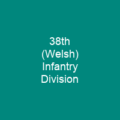The 18th Infantry Division was formed in September 1939 as a second-line duplicate of the 54th Infantry Division. It was based in Britain from 1939 to 1941, undergoing training and being moved around the country. Most of the division was diverted to India to reinforce British forces facing the Japanese. The 53rd Brigade was sent to Singapore, from where it was deployed north to Johore and became embroiled in the Battle of Muar. It then made a final stand in the city of Singapore and repulsed several Japanese attacks.
About 18th Infantry Division (United Kingdom) in brief

It was formed from men from the counties of Essex, Norfolk and Suffolk, and support troops from Suffolk, Cambs and Norfolk. In March 1939, after the re-emergence of Germany as a European power and its occupation of Czechoslovakia, the UK increased the number of divisions in the Territorial Army by duplicating existing units. The plan was for existing units to recruit over their establishments, aided by an increase in pay for Territorials, the removal of restrictions on promotion which had hindered recruiting, the construction of better-quality barracks, and an increased in supper rations. Despite the intention for the army to grow, some TA divisions had made little progress by the time the Second World War began. In April, limited conscription was introduced. This resulted in 34,500 twenty-year-old militiamen being conscripted into the regular army, initially to be trained for six months before deployment to the front line. Despite a lack of central guidance to train them, the training process would take no more than six months. In May, the 18th Divison was deployed to the North West where the division also helped unload merchant ships during the Liverpool Blitz. It left Britain during October bound for Egypt. By December, the convoy had reached South Africa and was preparing for the final stretch of its journey when news of the Japanese entry into the war was received. The division, with the rest of the garrison, surrendered to Japanese forces in February 1942.
You want to know more about 18th Infantry Division (United Kingdom)?
This page is based on the article 18th Infantry Division (United Kingdom) published in Wikipedia (as of Nov. 02, 2020) and was automatically summarized using artificial intelligence.







